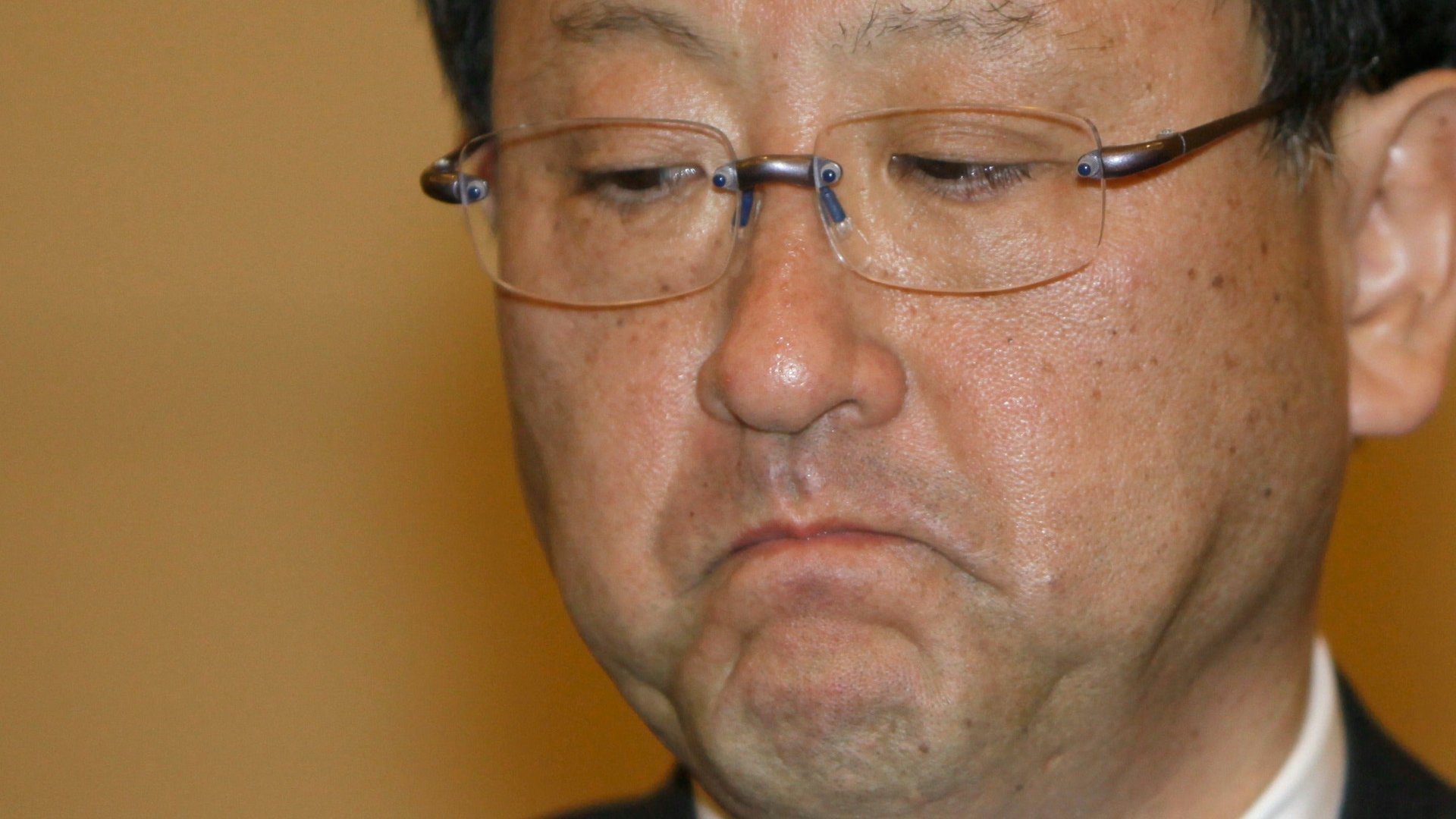The markets can tell when a CEO apologizes and doesn’t mean it
If you’re trying to clean up a mess, only apologize if you feel remorse.


If you’re trying to clean up a mess, only apologize if you feel remorse.
Investors and other stakeholders watch execs micro-expressions during his apology, to see how he really feels. If they see inappropriate emotions, disgust or happiness, the company’s stock price falls by an abnormal amount, new research indicates. Saying “I’m sorry” works only if your facial expressions align with your message, with no secret flash of disgust or happiness.
“Stakeholders want to see that you feel badly, and that’s what helps restore trust in the organization,” said Leanne ten Brinke, a University of California, Berkeley postdoctoral fellow in the business school who specializes in deception. She presented her paper, written with a London Business School professor, at the Academy of Management conference this week.
Previous research on corporate mea culpas have considered the effectiveness of the verbal aspects but didn’t look for non-verbal cues.
Her research was done in two phases: In the first an actor played a CEO apologizing for a made-up bacterial outbreak in a food processing plant, which caused death and illness. Then 75 participants evaluated his statements, where the actor displayed only sadness, then interspersed happiness and disgust (an indicator of falsity or of dismay at having to pretend to feel bad). Then, researchers found videos of executives seeking forgiveness or making amends for their missteps. Using ten Brinke’s background in forensics, she coded them frame by frame for the emotions shown on the upper face and lower face. Among the apologies were those made by Alaska Airways and JetBlue for travel disruptions, Mattel and Toyota for product recalls, and KFC, News Corp. and FedEx for employee misconduct. The researchers went on to look at how the company’s stock performed in the days after the apologies were issued. They looked for changes of that stock and found that “abnormal returns worsened as greater durations of disgust were displayed.”
A few posted significant falls, including Netflix shares falling 17% in the two days in 2011 after CEO Reed Hastings apologized for raising prices.
Netflix CEO Reed Hastings’s apology for a price hike, he expressed a lot of happiness. He missed his expected stock price (based on pre-transgression trajectory) by 7.44% on the day of, and 9.70% on the day after.
In 2011, the apology by BlackBerry’s former co-CEO Mike Lazaridis for service outages showed lots of sadness did abate stock market prices on the day of (only -.8%) and day after (+.17). But it dropped off again the next day (-3.90), potentially because of continued poor service.
“When the apologizing CEO appeared inappropriately happy and disgusted, observers perceived him as less remorseful and thus, were less likely to accept the apology, believe the organization would avoid future scandals, and chose to invest less money in the company,” ten Brinke wrote. However, an “appropriate emotional expression protected the firm from further damage to stock price.”
Former CEO of JetBlue, David Neeleman, maintained a genuine look of remorse in his apology video in February 2007 after thousands of customers were stranded in airports after a snow storm. JetBlue posted a small but positive change in their stock price when the apology was issued, and prices continued to rise in the days following the apology.
In Western culture, “you’re supposed to look sad, somewhat disappointed in yourself” and your team, she said. In Asia, a few of the executives included a formal bow.